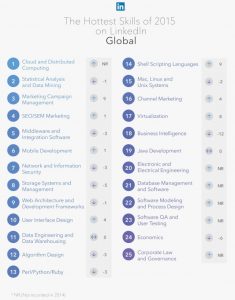When was the last time you completed a performance review of your business in a period of time shorter than one year? With looming deadlines and new product releases on the horizon, it is increasingly difficult to fit monthly, or even quarterly reviews into our busy schedules. But reviewing your business’ monthly or even quarterly performance is one of the most important ingredients for improving business performance. And who doesn’t want to improve business performance?
Surprisingly, many companies, large and small, do not actually conduct monthly or quarterly review meetings. When they do, the meetings are disorganized and unfocused. In this post, we provide some effective ways to not only prepare and schedule a review meeting, but also how to properly conduct one.
Preparing for Performance Reviews
The first step in measuring performance is deciding which metrics to review. Don’t try to review every little detail of the company or department; it is impossible and counterproductive. A recommended range is between five and ten crucial metrics that you see as key performance indicators (KPIs). This number is manageable, and after a few review meetings, you may decide to change some of the metrics as the business shifts or opens up to new market opportunities.
Your KPIs define how your company measures success. Once they are chosen, it is time to set goals for the KPIs. To ensure that your goals are relevant, make them correspond to the SMART method. That means that your goals should be specific, measurable, attainable, relevant and time-based.
As a company that globally sells digital products online, you want to think beyond traditional “revenue” and “units sold” measurements. For example, don’t just say, “I want to increase conversion rates.” It is not specific enough. Instead, say, “I want to increase conversion rates in under-performing regions next quarter.”
This goal is:
- Specific – It tells you exactly what you want to happen (“increase conversion rates in under-performing regions.”)
- Measurable – You can measure the amount of unique visitors from a certain country against their sales to identify under-performing regions. Then you can enact changes and see if the conversion rate improves.
- Attainable – Your goal may be reached through new marketing tactics, offering local currencies or payment methods, and split testing carts.
- Relevant – Setting this type of goal lets you know what helps make you successful and what is ineffective. Increasing conversion rates also has numerous additional benefits to your business and your bottom line.
- Time-Based – Your goal has a specific timeline (“next quarter”) in which you can implement changes and measure their success.
The final step in preparing for business reviews is to set a regular review schedule in advance and stick to it. Do not wait for a break in your busy schedule to conduct these reviews. If you wait, you will push it off. Remember to choose a timeframe that works for you. If, based on your business sales cycles, a monthly review is too often, then do a quarterly review.
Conducting the Review Meeting
Once the review has been scheduled and you have attendees in place, don’t just read the numbers out loud. Review the results against your goals by creating graphs and data tables to help tell the story of how your goals stack up against the results:

Next, you need to identify opportunities for improvement. Finding the opportunities to improve is easy; it is the area between your goals and your actual performance. Some call this “Continuous Improvement” or “Performance Improvement”, but the name doesn’t matter as long as you can quantify the gap between the goal and the result, and then set your sights on next steps.
Periodic business reviews are also great opportunities to celebrate good performances. Besides boosting morale, you also emphasize the importance of those practices that led to success. Focus on what worked and apply those lessons to other areas of your business.
Now that you have identified areas for improvement it is important to create an action plan to help you organize and execute further improvements. There are four simple steps to developing an action plan.
- Brainstorm all the possible solutions.
- Prioritize these solutions based on greatest impact.
- Assign/delegate solutions and schedule follow-up dates.
- Follow-up as scheduled and make necessary adjustments.
Following up in between your regular review meetings is the most important detail of this process. It gives you the ability to adjust your plan if the desired results do not occur.
Keystone
A business is expected to improve in order to survive. Without a regular review of performance metrics, whether monthly or quarterly, your company will be at a disadvantage in the marketplace.
Leave a comment if you would like share any interesting metrics that you use for performance reviews.
(253)






